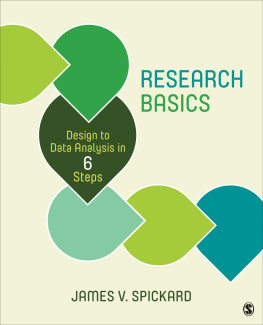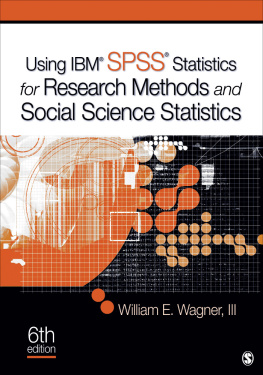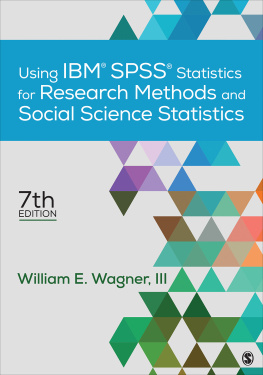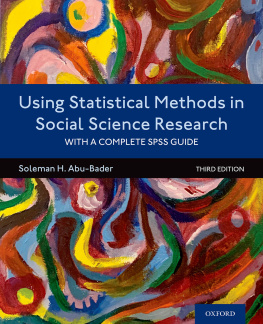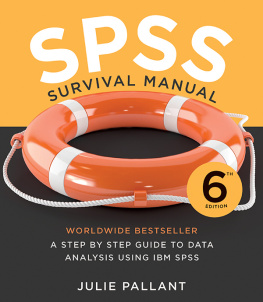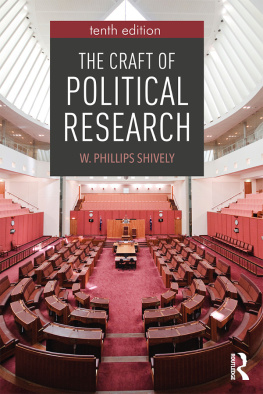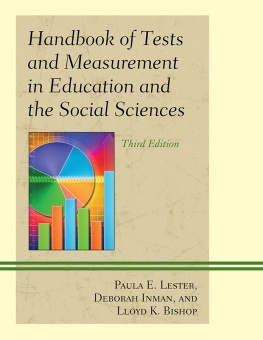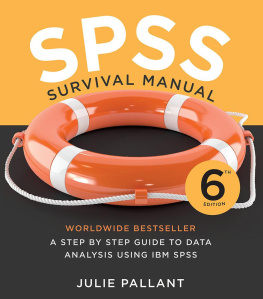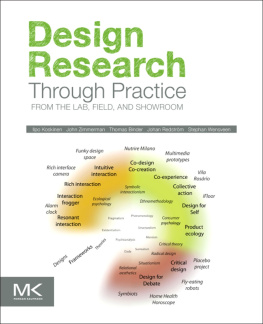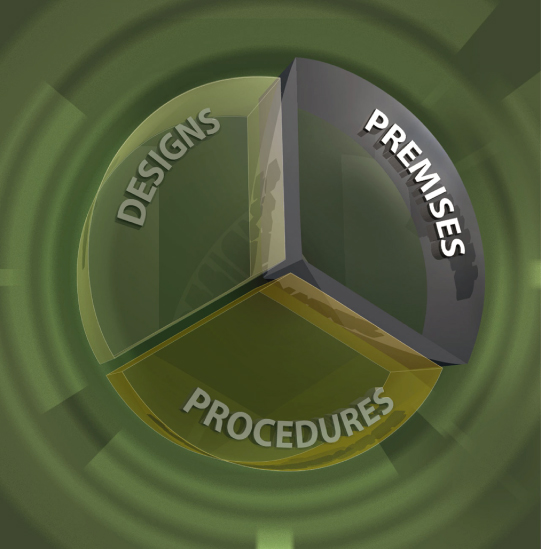
Cover Image: Courtesy of Dominic Williamson
Copyright 2013 by John Wiley & Sons, Inc. All rights reserved.
Published by John Wiley & Sons, Inc., Hoboken, New Jersey.
Published simultaneously in Canada.
No part of this publication may be reproduced, stored in a retrieval system, or transmitted in any form or by any means, electronic, mechanical, photocopying, recording, scanning, or otherwise, except as permitted under Section 107 or 108 of the 1976 United States Copyright Act, without either the prior written permission of the Publisher, or authorization through payment of the appropriate per-copy fee to the Copyright Clearance Center, Inc., 222 Rosewood Drive, Danvers, MA 01923, (978) 750-8400, fax (978) 750-4470, or on the web at www.copyright.com. Requests to the Publisher for permission should be addressed to the Permissions Department, John Wiley & Sons, Inc., 111 River Street, Hoboken, NJ 07030, (201) 748-6011, fax (201) 748-6008, or online at http://www.wiley.com/go/permissions.
Limit of Liability/Disclaimer of Warranty: While the publisher and author have used their best efforts in preparing this book, they make no representations or warranties with respect to the accuracy or completeness of the contents of this book and specifically disclaim any implied warranties of merchantability or fitness for a particular purpose. No warranty may be created or extended by sales representatives or written sales materials. The advice and strategies contained herein may not be suitable for your situation. You should consult with a professional where appropriate. Neither the publisher nor author shall be liable for any loss of profit or any other commercial damages, including but not limited to special, incidental, consequential, or other damages.
For general information on our other products and services or for technical support, please contact our Customer Care Department within the United States at (800) 762-2974, outside the United States at (317) 572-3993 or fax (317) 572-4002.
Wiley also publishes its books in a variety of electronic formats. Some content that appears in print may not be available in electronic formats. For more information about Wiley products, visit our web site at www.wiley.com.
Library of Congress Cataloging-in-Publication Data:
Abbott, Martin, 1949
Understanding and applying research design / Martin Lee Abbott, Jennifer McKinney.
p. cm.
Includes bibliographical references.
ISBN 978-1-118-09648-2 (cloth)
1. ResearchMethodology. 2. ResearchStatistical methods. I. McKinney, Jennifer, 1969- II. Title.
Q180.55.M4A236 2013
001.4'2dc23
2012010997
To
Joyce and William McKinney
Hannah Mary and Jacob Hovan
PREFACE
Social scientific research is the systematic and rigorous process of exploring the world around us. Good social science requires good research design and solid analytic skills. Both authors strive to teach students the methods of research design and statistical analysis in order that students learn how to pose research questions, test research questions, and draw conclusions on the research that they have conducted, as well as to critique the research they are exposed to through media, classes, and real-life situations. We have taught research methods and statistics courses at the university level for many years. In addition, we have published articles and books on the subjects and are involved in applied research projects in which we put into practice what we develop in this book.
This book grew from the need to provide a systematic but approachable book for our students. Other research design books often use a stilted approach that masks the vibrancy of research statistics and design (or they focus simply on either statistics or design). In this book, we hope to avoid these issues by providing a creative format and common language that will enable students to understand the content of social research at a more meaningful level.
The layout of the book is a reflection of our approach to teaching, and it targets contemporary student learning styles. We present research design material in approachable language interspersed by content that allows students the opportunity to delve as deeply as they wish in the material. Extended study units in statistical concepts and application exercises are placed strategically throughout the book to enhance the main focus of the book, research design.
We use SPSS. We include SPSS screen shots in the following chapters and sections: Chapters 13, 611, 13, 15, and 16, Statistical Procedures Unit C, and Data Management Units AC.
In preparing this book, we have distilled the most meaningful content from our class-tested approaches and from our published works. We use current real-world data for our examples and discussions, in particular, the 2010 GSS We hope readers enjoy learning about the engaging world of research premises, procedures, and designs.
MARTIN LEE ABBOTT
JENNIFER MCKINNEY
Notes
SPSS, Inc., an IBM Company. SPSS screen reprints throughout the book are used courtesy of International Business Machines Corporation, SPSS, Inc., an IBM Company. SPSS was acquired by IBM in October 2009.
)
.
U.S. Census, 2010.
Abbott, Martin Lee, Understanding Educational Statistics using Microsoft Excel and SPSS , Wiley, 2011. Also, Abbott, Martin Lee, The Program Evaluation Prism , Wiley, 2010. Both are used by permission of the publisher.
Supplementary material for this book can be found by entering ISBN 9781118096482 at booksupport.wiley.com.
ACKNOWLEDGMENTS
Several people have helped to make this book possible. We would like to thank our friends and colleagues David Diekema, Sara Koenig, Paula Mitchell, Greg Moon, Kevin Neuhouser, Lorraine Shaman, Karen Snedker, Cathy Thwing, Linda Wagner, and Cara Wall-Scheffler. We thank Dominic Williamson for his graphic design that we use in the book (and on the cover) and Roger Finke for allowing us to draw so much from the ARDA. We also thank Jacqueline Palmieri for her continuing support of our efforts to publish accessible social science matter.
Finally, we thank our students who have taught us how to think about teaching statistics and design, and who help us to remember that research methods are fun!
M.L.A.
J.M.
PART I
WHEEL OF SCIENCE: PREMISES OF RESEARCH
DUH SCIENCE VERSUS HUH SCIENCE
HOW DO WE KNOW WHAT WE KNOW?
When we go through the education process, we each take several categories of classes, especially if we know were headed to college. Often one of these categories is science and includes classes in biology, chemistry, or physics. Because of this we come to think of science as particular substantive areas rather than as a particular process . The process of science allows us to follow systematic steps to better understand the world around us. Whether using amino acids, elements along the periodic chart, sound waves, or peoples attitudes, following the process of science allows us to see patterns in our materials. Granted, its often harder to think of people as materials than it is to think of saltwater solutions as materials. Regardless of what we are looking for, following the scientific process allows us to gauge what is going on in the world.
The process of social science differs from other sciences only in that the social sciences use people to find patterns. While most of us think of people as individuals, each individual lives in a particular social context that has a surprising amount of order to it. For example, Americans drive on the right side of the road; Britons drive on the left. Even though both countries are made up of individuals, they each tend to transfer their cultural order to walking on the same side of the sidewalk. Even though each individual may walk in a unique way (perhaps like Monty Pythons lumberjack walk), each tends to gravitate toward the right or left side of a sidewalk depending on countryor cultural orderof origin.
Next page



